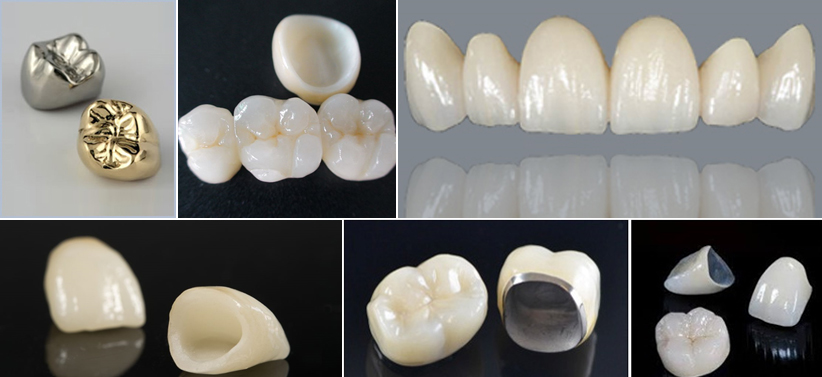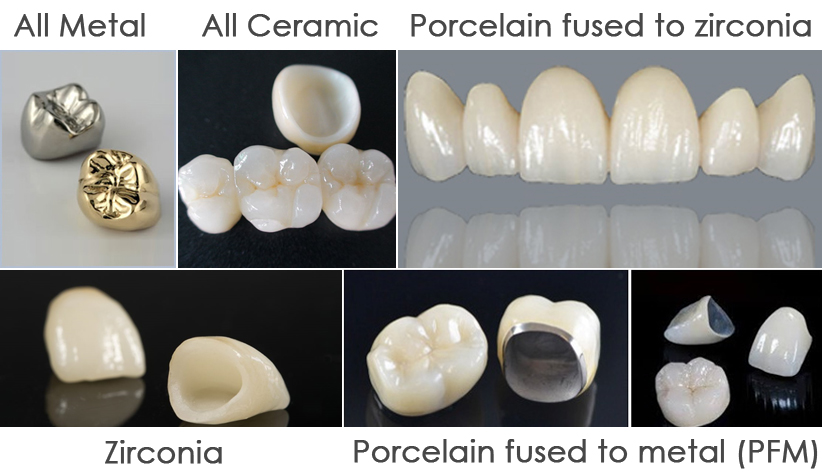Crown cover all five surfaces of teeth above gum line and protect remaining
tooth structure from further loss and weakening. It is fixed prosthesis that is
cemented onto tooth by Dentist. Crowns are used to restore teeth that have been
damaged and weakened by:
- Root canal treatment
- Large fillings and restorations
- Significant wear
- Cosmetic and esthetic reasons
In this era of advanced dentistry full porcelain crows provide the most desirable esthetics. Porcelain is a kind of Ceramic. Ceramic is derived from Greek word keramos which literally means ‘burnt stuff’. This material is opaque, relatively weak and porous. It mainly consist of Kaolin, blending of this with other materials such as silica and feldspar produce porcelain which is translucent and has extra strength.
Crown helps the tooth to remain functional for longer period of time otherwise it may fracture so crown strengthened the tooth. Crowns are advised to restore functions and esthetics. Teeth with large fillings cannot withstand biting force, it
may crack and fracture or filling may dislodge or cause the tooth to break. So it is necessary to cover it with more hard and strong material that can work as tooth replacement as well as maintain shape of the tooth. In comparison to large fillings
crown can withstand greater amount of biting forces, without risk of fracture. Crown improve appearance of badly broken tooth and hide color of non-tooth colored filling materials. Crowns can be used to cover and protect fracture tooth, where it act as splint and prevent crack propagation.
Crowns can be made of different materials:
All metal and porcelain fused to metal have high strength so they are preferred for posterior teeth while all ceramic and zirconia crowns have esthetic advantage so preferred for anterior teeth.
After root canal treatment, need for crowns is dependent on amount of remaining tooth structure and tooth position in mouth. Usually crowns are recommended for posterior teeth that play main role in chewing. After root canal of posterior teeth remaining tooth structure is often compromised because of tooth decay and extension of cavity to gain access to pulp chamber. Front teeth are primarily used for incising and teasing food apart and experience less tooth loss following decay, so require crown less often than posterior teeth. Also the cavity preparation of anterior teeth to gain access to pulp chamber is small and conservative. Sometimes remaining tooth structure is so much compromised that it cannot support crown. In that cases it is necessary to build foundation before crown cutting to support crown or increase area of tooth by crown lengthening or add additional features like post and pins to support and retain foundation.
Dental crowns require two dental visits, first visit is for crown preparation and placement of temporary crown and then second visit after few days for cementation of permanent crown. Some crowns require less tooth structure removal like all metal crowns because they can be made thinner.
Your gum line around crown margins, is potential and ideal place for bacterial growth. So it is imperative to maintain good oral hygiene even after crown placement.


